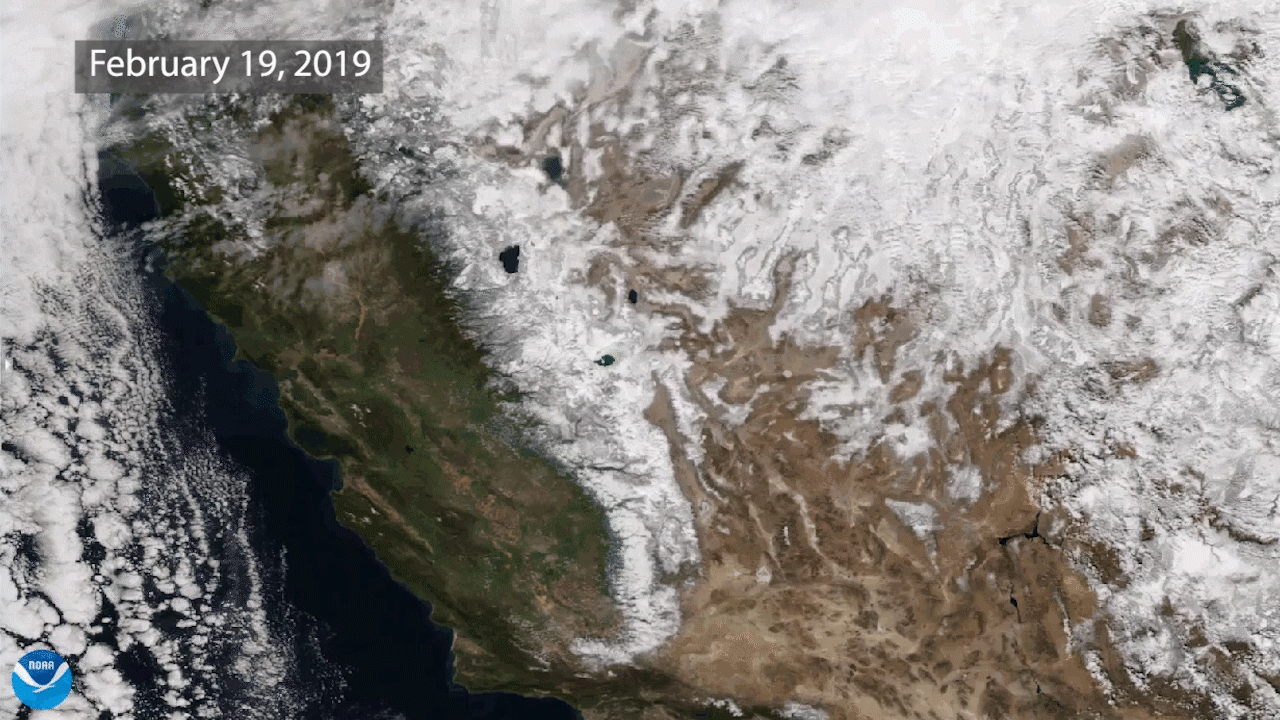
California has had a notably wet and stormy winter this year. In recent weeks, a parade of storms coming off the Pacific has dropped copious amounts of rain and mountain snow across the Golden State. Evidence of this active weather pattern appears in recent satellite imagery, which shows the Sierra Nevada blanketed in white.
Above are two views of the Sierra seen from space approximately one year apart. The left image was captured by the Suomi NPP satellite on Feb. 15, 2018; the right image was seen from the NOAA-20 polar-orbiting satellite on Feb. 19, 2019. Unlike last February, when the Sierra snowpack was running below normal , the mountain range has been practically buried under a wall of snow this year.
Several mountain resorts have recorded more than 400 inches (33.3 feet) of snow this winter, the National Weather Service's Reno, Nevada forecast office recently reported. At Mammoth Mountain near Yosemite National Park, 543 inches (45.3 feet) of snow had fallen through Feb. 17. The Squaw Valley ski area near Lake Tahoe isn't far behind, coming in at 492 inches (41 feet). Several nearby resorts picked up 6 to 8 feet of snow in just seven days, as back-to-back storms slammed California in mid-February.
Much of the recent snow came courtesy of atmospheric rivers. These narrow plumes of atmospheric moisture can stretch for thousands of miles over the ocean, and frequently bring heavy precipitation to the West Coast during the winter months.
The barrage of storms is good news for California's water supply. Snowpack in the Sierrais running about 50 percent above normal season-to-date, according to California's Department of Water Resources. Spring and summer snowmelt from the Sierra supply 60 percent of Southern California's water resources and 75 percent of the state's agricultural water. Above-normal winter snowpack helps recharge California's reservoirs and reduces the likelihood of drought during the summer dry season.
An animated comparison of the 2018 vs. 2019 snowpack is available for download here.
